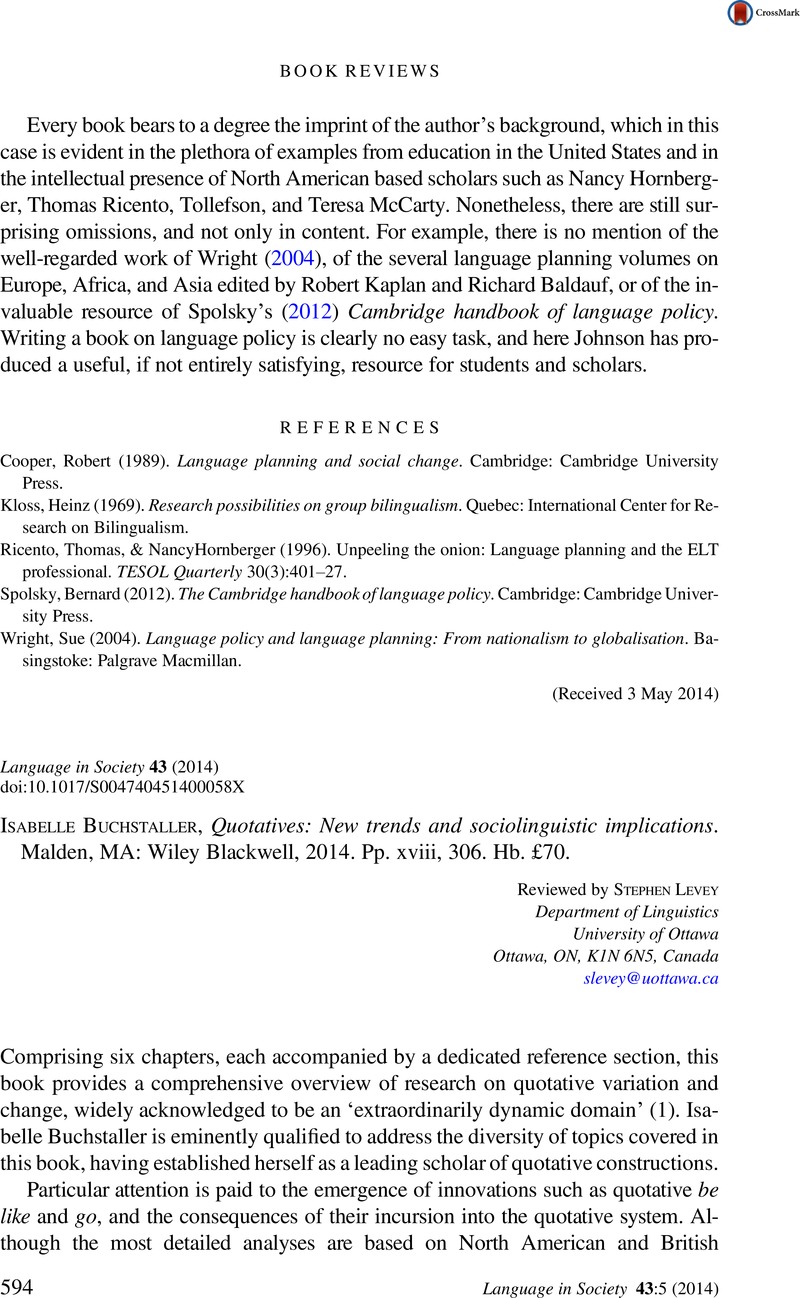No CrossRef data available.
Article contents
Isabelle Buchstaller, Quotatives: New trends and sociolinguistic implications. Malden, MA: Wiley Blackwell, 2014. Pp. xviii, 306. Hb. £70.
Published online by Cambridge University Press: 28 October 2014
Abstract
An abstract is not available for this content so a preview has been provided. Please use the Get access link above for information on how to access this content.

- Type
- Book Reviews
- Information
- Copyright
- Copyright © Cambridge University Press 2014
References
Bayley, Robert (2013). The quantitative paradigm. In Chambers, Jack & Schilling, Natalie (eds.), The handbook of language variation and change, 2nd ed., 85–107. Malden, MA: Wiley Blackwell.Google Scholar
Güldemann, Tom (2008). Quotative indexes in African languages: A synchronic and diachronic survey. Berlin: Mouton de Gruyter.Google Scholar
Labov, William (1969). Contraction, deletion, and the inherent variability of the English copula. Language 45:715–62.Google Scholar
Meyerhoff, Miriam, & Niedzielski, Nancy (2003). The globalization of vernacular variation. Journal of Sociolinguistics 7:534–55.CrossRefGoogle Scholar
Tagliamonte, Sali (2006). Analysing sociolinguistic variation. Cambridge: Cambridge University Press.Google Scholar




